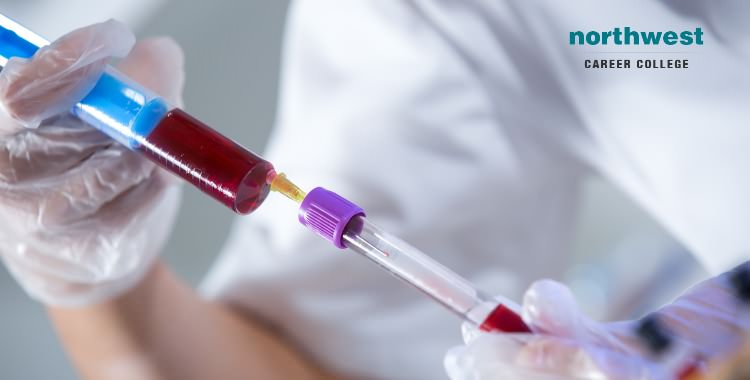A Biased View of Northeast Medical Institute - New Haven Campus Phlebotomy Course & Cna Class
A Biased View of Northeast Medical Institute - New Haven Campus Phlebotomy Course & Cna Class
Blog Article
Some Known Questions About Northeast Medical Institute - New Haven Campus Phlebotomy Course & Cna Class.
Table of ContentsThe Greatest Guide To Northeast Medical Institute - New Haven Campus Phlebotomy Course & Cna ClassThe Main Principles Of Northeast Medical Institute - New Haven Campus Phlebotomy Course & Cna Class Some Known Questions About Northeast Medical Institute - New Haven Campus Phlebotomy Course & Cna Class.3 Easy Facts About Northeast Medical Institute - New Haven Campus Phlebotomy Course & Cna Class ExplainedNortheast Medical Institute - New Haven Campus Phlebotomy Course & Cna Class - TruthsUnknown Facts About Northeast Medical Institute - New Haven Campus Phlebotomy Course & Cna Class
The usage of such devices should be accompanied by various other infection avoidance and control techniques, and training in their usage. Not all security tools apply to phlebotomy. Before picking a safety-engineered device, users should thoroughly explore readily available tools to identify their suitable usage, compatibility with existing phlebotomy techniques, and efficiency in shielding personnel and individuals (12, 33).For settings with low resources, price is a driving variable in procurement of safety-engineered devices - PCT Training. Where safety-engineered gadgets are not offered, proficient use a needle and syringe serves. Unintentional direct exposure and certain information concerning a case need to be tape-recorded in a register. Assistance services must be promoted for those that undergo unintentional direct exposure.
One of the important pens of high quality of treatment in phlebotomy is the involvement and participation of the person; this is mutually beneficial to both the health and wellness worker and the patient. Clear information either created or verbal should be readily available to each individual that goes through phlebotomy. Annex F gives example text for describing the blood-sampling procedure to a client. labelling); transport conditions; analysis of results for medical administration. In an outpatient division or clinic, offer a devoted phlebotomy cubicle containing: a tidy surface area with two chairs (one for the phlebotomist and the various other for the patient); a hand wash basin with soap, running water and paper towels; alcohol hand rub. In the blood-sampling area for an outpatient department or center, offer a comfy reclining sofa with an arm remainder.
6 Easy Facts About Northeast Medical Institute - New Haven Campus Phlebotomy Course & Cna Class Described
Make sure that the indicators for blood sampling are clearly specified, either in a written method or in documented directions (e.g. in a lab form). Gather all the equipment required for the procedure and location it within secure and easy reach on a tray or cart, making certain that all the products are plainly noticeable.
Present on your own to the person, and ask the individual to mention their complete name. Check that the research laboratory form matches the individual's identification (i.e. match the client's information with the laboratory kind, to make certain accurate identification).
Make the client comfortable in a supine placement (if possible). The client has a right to decline a test at any kind of time prior to the blood sampling, so it is crucial to guarantee that the individual has actually understood the treatment - Phlebotomy Classes.
Getting The Northeast Medical Institute - New Haven Campus Phlebotomy Course & Cna Class To Work
Extend the person's arm and evaluate the antecubital fossa or lower arm. Locate a capillary of an excellent size that is visible, straight and clear.
DO NOT put the needle where veins are diverting, due to the fact that this increases the opportunity of a haematoma. Situating the blood vessel will certainly help in establishing the correct size of needle.
Specimens from central lines carry a danger of contamination or wrong lab examination results. It is acceptable, however not perfect, to attract blood samplings when very first introducing an in-dwelling venous device, before connecting the cannula to the intravenous fluids.
Not known Details About Northeast Medical Institute - New Haven Campus Phlebotomy Course & Cna Class
Failure to enable enough get in touch with time raises the risk of contamination. DO NOT touch the cleaned site; in specific, DO NOT place a finger over the capillary to lead the shaft of the subjected needle.
Ask the person to create a clenched fist so the blood vessels are extra famous. Enter the blood vessel swiftly at a 30 level angle or less, and proceed to present the needle along the capillary at the most convenient angle of entrance - CNA Training. When sufficient blood has been gathered, launch the tourniquet BEFORE taking out the needle
Getting The Northeast Medical Institute - New Haven Campus Phlebotomy Course & Cna Class To Work
Withdraw the needle carefully and apply mild pressure to the website with a clean gauze or dry cotton-wool round. Ask the person to hold the gauze or cotton woollen in area, with the arm extended and raised. Ask the client NOT to bend the arm, since doing so creates a haematoma.
The 6-Minute Rule for Northeast Medical Institute - New Haven Campus Phlebotomy Course & Cna Class
Do not push the syringe bettor because additional pressure enhances the threat of haemolysis. Where possible, keep the tubes in a shelf and move the rack towards you. Infuse downwards right into the suitable coloured stopper. DO NOT get rid of the stopper since it will release the vacuum. If the sample tube does not have a rubber stopper, inject incredibly slowly right into the tube as lessening the pressure and speed utilized to transfer the specimen minimizes the threat of haemolysis.

Report this page